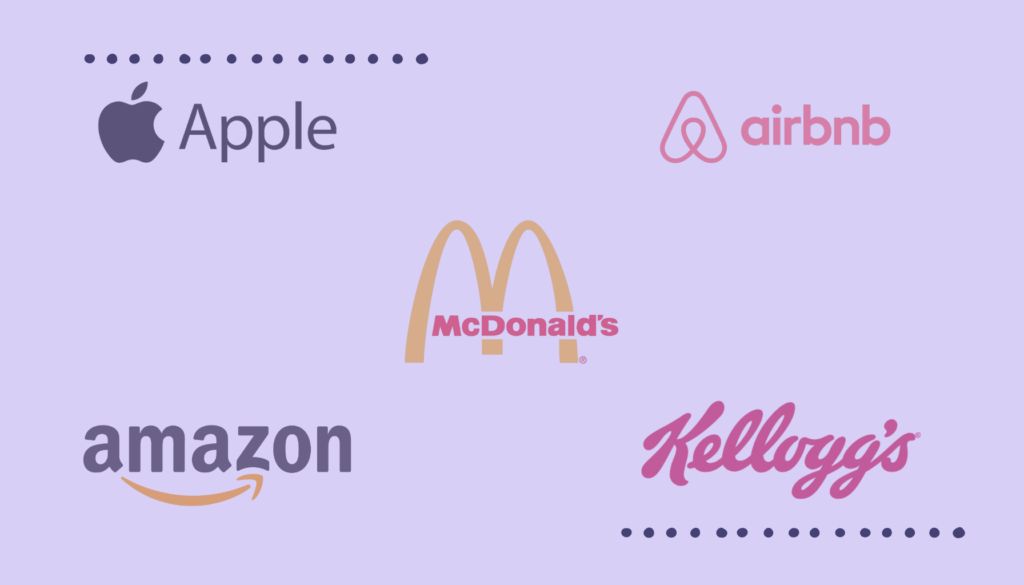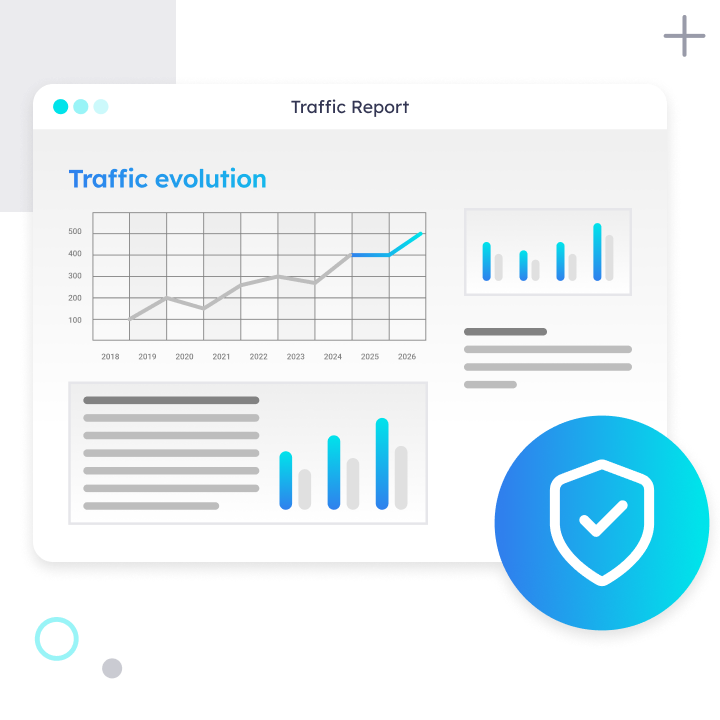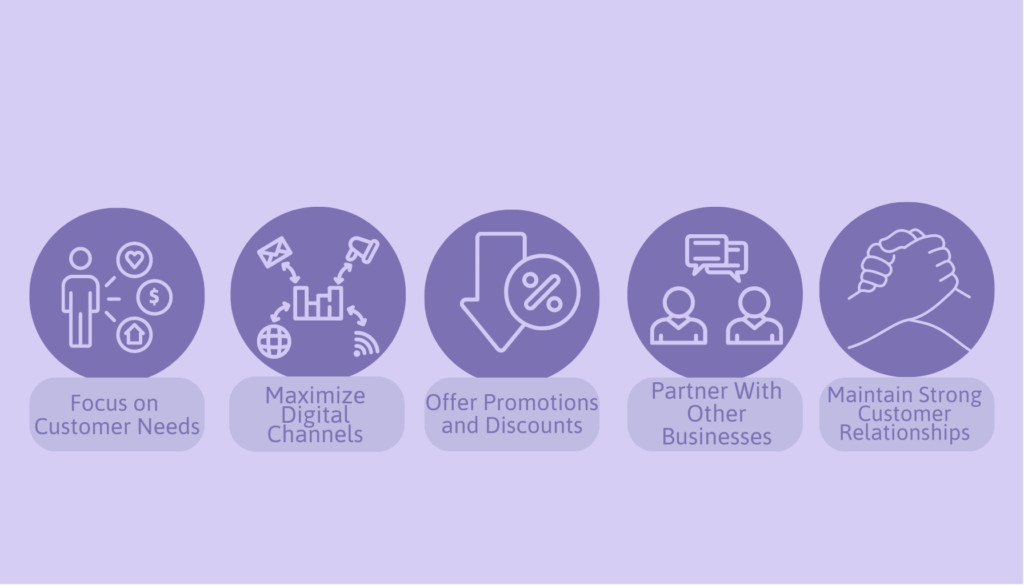
As a business owner, you understand that the economy can be unpredictable. You’ve invested time, energy, and resources to build a successful business, but what happens when the market takes a turn for the worse? Economic downturns, like recessions, can be a real threat to your business’s survival. However, with the right marketing strategies in place, you can weather the storm and come out stronger on the other side.
Recent predictions by economists suggest that the US economy is on the brink of a recession, making it more important than ever to have a recession-proof marketing plan. You don’t want to be caught off guard without the right strategies in place to adapt to changing market conditions.
The good news is that there are marketing strategies that businesses use to prepare for and even grow during a recession. In this article, we’ll share our market research and dive into proven strategies that recession-proof businesses use to achieve growth during tough economic times. By proactively preparing and marketing your business, you can not only survive but also thrive in a recession. Let’s get started.
Why (and How) Marketing Can Help Recession-Proof Your Business?
The thought of a recession can be daunting for any business owner. However, it is essential to remember that there are ways to recession-proof your business. One of the key ways to do this is through strategic marketing.
The Harvard Business Review conducted a year-long study of 4,700 publicly traded businesses during three different global recessions. The study found that 17% of businesses did not survive, while 80% were still trying to catch up to their pre-recession strength three years after the economy had recovered. On the other hand, 9% of businesses managed to grow through the recession. So, what did these businesses do differently?
The Role of Data in Building Resilience During a Recession
The businesses that thrived during past recessions established market share ahead of time and reacted with data-driven marketing strategies that catered to their existing customers’ changing needs during challenging economic times. Data is key during a recession because the ground shifts rapidly. Consumer sentiment and buying habits change, and there are new factors impacting the market that businesses cannot control. Hence, businesses need access to reliable data about their customers and their business to make informed decisions.
One effective way to collect data is through customer surveys. These surveys can help you gather data directly from your customers in real-time to understand how their needs and spending habits are evolving during the recession. This data should include how customers feel, what they want and need, and what they are cutting back on or changing in their budget in response to the news.
Another way to collect data is through a marketing audit. A marketing benchmark audit can help you understand how your digital marketing is performing compared to industry standards. During a recession, an audit can help identify how to optimize lower-cost marketing channels like websites, search engine visibility, email, and social media. By analyzing this data, you can gain insights that help you earn consumer trust, optimize your marketing strategy, and provide exactly what your customers are looking for in the moment.

Recession-Proof Marketing Strategies From Successful Brands
History has shown that companies that invest in marketing during economic downturns often come out stronger on the other side. Here are a few examples of companies that took a proactive approach during recessions and emerged as leaders in their respective industries.
Kellogg’s Boosted Brand Marketing Efforts and Promotions
During the Great Depression of the 1930s, Kellogg‘s was faced with declining sales and increased competition from other breakfast food brands. To combat this, the company invested heavily in marketing efforts such as advertising campaigns, in-store promotions, and product packaging. Kellogg’s introduced a variety of new products and flavors and also partnered with grocery stores to offer coupons and other discounts to customers. These efforts helped the company to maintain market share and even increase sales during the economic crisis. Kellogg’s continued to use these marketing strategies in subsequent recessions and economic downturns, demonstrating the effectiveness of investing in marketing during challenging times.
Amazon Adapted to the Changing Consumer Needs
During the dot-com crash of 2000, many e-commerce businesses went bankrupt, but Amazon managed to survive and thrive. One of the reasons for their success was their focus on customer experience and satisfaction. They invested in their website design and user interface, making it easy for customers to find and purchase products. They also introduced free shipping and personalized recommendations, which helped to increase customer loyalty and satisfaction.
Apple Focused on Innovation and Customer Experience
The 2008 financial crisis hit many industries hard, but Apple managed to weather the storm thanks to its marketing strategy. The company launched new products such as the iPhone 3G and MacBook Air and continued to improve existing products such as the iPod and Mac. Apple’s marketing campaigns also focused on emphasizing the unique features and benefits of their products, such as the user-friendly interface and sleek design. Additionally, the company implemented a customer experience strategy that included in-store product demonstrations and one-on-one consultations with Apple experts. These efforts helped Apple to maintain strong sales despite the economic downturn.

McDonald’s Offered Value-Based Marketing
During the recession of the early 1990s, McDonald’s faced a decline in sales and had to find a way to attract more customers. They decided to launch the “Value Menu,” which offered a selection of menu items at a lower price point. This helped to increase foot traffic and sales, and also attracted new customers who were looking for affordable dining options during tough economic times.
Airbnb Leveraged User-Generated Content for Marketing Success
During the COVID-19 pandemic in 2020, the travel industry was hit hard, and many hotels and vacation rentals struggled to stay afloat. However, Airbnb managed to adapt their marketing strategy to the new normal. They focused on promoting “staycations” and local travel and offered discounts and flexible cancellation policies to attract customers. They also invested in virtual experiences and online events, which helped to keep their brand top-of-mind for customers who were stuck at home.
Free template: CRO audit checklist
Discover everything you need to start identifying drop-offs and increase conversions.

How Recession-Proof Businesses Prepare to Market During Economic Downturns
Focus on Customer Needs
During a recession, understanding your customers’ needs is crucial for the survival and success of your business. As consumers become more cautious with their spending, their needs and priorities shift. To stay relevant and competitive, businesses must adapt their products and services to meet these changing demands. This requires a deep understanding of customer pain points, which can be uncovered through market research.
Market research is a vital tool for identifying customer pain points during a recession. This involves gathering data and feedback directly from customers about their changing needs and priorities. This information can then be used to adapt your products and services to better meet these needs. By understanding your customers’ pain points and adapting your offerings accordingly, you can create a more customer-centric approach to marketing that resonates with your audience and drives sales.
In addition to adapting your products and services, customer feedback can also inform your marketing messaging during a recession. By listening to your customers’ concerns and addressing them in your marketing communications, you can build trust and credibility with your audience. This can be especially effective during a recession when consumers are more skeptical of marketing messages that seem overly promotional or salesy.
One way to gather customer feedback is through surveys and focus groups. These tools allow you to ask specific questions about your customers’ needs, preferences, and pain points, and can help you identify opportunities for improvement in your products and services. You can also use social media listening tools to monitor what customers are saying about your brand online and to identify trends and issues that may be affecting your business.
Once you have gathered this data, it is important to use it to inform your marketing strategies. This may involve making changes to your messaging, targeting, and channels to better meet your customers’ needs. For example, if your market research shows that your customers are increasingly concerned about price, you may want to focus on promoting your value proposition in your marketing messages and consider offering discounts or promotions to drive sales.
Maximize Digital Channels
During a recession, businesses often experience a decrease in traditional forms of customer engagement, such as in-person shopping or face-to-face meetings. This makes it crucial for businesses to shift towards digital channels to maintain customer engagement and reach new potential customers. Here are some ways businesses can maximize digital channels during a recession:
- Optimizing Website for Search Engines and Boost Conversions:
Search engine optimization (SEO) is the process of optimizing your website to rank higher in search engine results pages (SERPs). By optimizing your website for search engines, you can increase your visibility to potential customers who are searching for your products or services online. During a recession, it’s important to ensure your website is optimized for search engines, as more and more people are likely to turn to the internet to research products and services before making a purchase.
Once you have that traffic, you should be able to make the most of it. Install Pathmonk Accelerate to automatically increase your website conversions by over 50% on average with the power of Artificial Intelligence.
Increase +180%
leads
demos
sales
bookings
from your website with AI
Get more conversions from your existing website traffic delivering personalized experiences.

2. Utilizing Email Marketing to Maintain Customer Engagement:
Email marketing is a cost-effective way to stay in touch with your existing customers, while also reaching potential customers who have expressed interest in your products or services. During a recession, maintaining customer engagement is crucial to ensure customer loyalty and repeat business. By sending regular email newsletters, you can keep their customers informed about any changes to your products or services, as well as any special promotions or discounts.
3. Leveraging Social Media for Cost-Effective Marketing Outreach:
Social media is a powerful and cost-effective tool for businesses looking to connect with their customers and reach new potential customers. During a recession, you can leverage social media to promote your products or services, share customer success stories, and engage with your audience. Social media platforms like Facebook, Twitter, and Instagram offer cost-effective advertising options, allowing businesses to reach a highly targeted audience without breaking the bank.
Offer Promotions and Discounts
During a recession, consumers are more price-conscious and they actively seek out deals and discounts. Offering promotions and discounts can be an effective way to attract customers and keep them engaged with your business. Here are some benefits and strategies for implementing promotions and discounts during a recession:
- Increased Sales: Offering discounts or promotions can attract new customers and encourage existing ones to make purchases.
- Brand Loyalty: Providing value to your customers can increase their loyalty to your brand.
- Clearing Inventory: If your business has excess inventory, promotions can help move those products and free up valuable storage space.
- Competitive Advantage: During a recession, businesses that offer discounts and promotions can stand out in a crowded market and attract more customers than those that don’t.
Not all promotions and discounts are created equal, and it’s important to determine which type is most suitable for your business. Some popular types of promotions include:
- Percentage Discounts: Offer a percentage discount on a product or service.
- Buy-One-Get-One-Free: Offer a free product or service with the purchase of another.
- Free Shipping: Offer free shipping on all orders.
- Rewards Program: Create a rewards program for repeat customers.
Time-limited offers can also create a sense of urgency and encourage customers to take action. Some strategies for creating urgency include:
- Flash Sales: Offer a limited-time discount on a specific product or service.
- Limited Inventory: Indicate that there is limited stock available of a certain product or service.
- Countdown Timer: Add a countdown timer to your promotion to show how much time is left before the offer expires.

Partner With Other Businesses
In times of recession, businesses may face significant challenges, such as decreased sales, lower customer demand, and tighter budgets. However, one effective strategy for mitigating these challenges is to partner with other businesses. Collaborating with other businesses can bring a range of benefits, including access to new audiences, cost-sharing opportunities, and increased visibility.
You can partner with other businesses by seeking out complementary businesses. These are businesses that offer products or services that are related to your own but are not direct competitors. For example, a furniture retailer could collaborate with a home decor store, offering a discount on their products to each other’s customers. This type of partnership can help businesses reach new audiences who may not have been previously aware of their products or services.
Another way to partner with businesses is through co-marketing efforts. Co-marketing is when two or more businesses work together to create marketing campaigns or promotions. For example, a restaurant and a movie theater could create a joint promotion, offering a discount on dinner and a movie. Co-marketing allows businesses to combine their marketing budgets and resources, and reach a wider audience through joint promotion.
Forming strategic partnerships with other businesses can also bring benefits. A strategic partnership is a formal agreement between two or more businesses to work together towards a shared goal. For example, two businesses could form a strategic partnership to share the costs of research and development or to jointly develop a new product or service. This type of partnership can help businesses increase their visibility and credibility in the market, as well as increase their access to resources and expertise.
Partnering with other businesses can bring significant benefits, but it’s important to choose the right partners and structure the partnership effectively. Before partnering with another business, you should consider factors such as the other business’s reputation, its target audience, and its level of expertise. You should also ensure that the partnership is structured in a way that is mutually beneficial and addresses any potential conflicts or challenges.
Maintain Strong Customer Relationships
During a recession, businesses are often focused on attracting new customers to maintain revenue. However, it’s important not to overlook the value of maintaining strong relationships with existing customers as, yes, they’ve already been acquired (hence it’s a cheaper channel). Customer retention is a key aspect of recession-proof marketing strategies, and there are several ways to achieve this.
One of the most effective ways to maintain strong customer relationships during a recession is by providing exceptional customer service. Customers are more likely to remember the way they were treated during a difficult time and will appreciate companies that go above and beyond to make their experience as smooth and positive as possible. Responding to inquiries and addressing customer concerns in a timely manner can build trust and loyalty.
Personalized communication is also crucial in maintaining strong customer relationships. During a recession, customers are likely to be more cautious with their spending, so it’s essential to tailor communication to their specific needs and preferences. This could include personalized email newsletters, targeted promotions based on past purchases or interests, or personalized messages from the business owner or customer service team.
Incentive programs can also be an effective way to encourage customer referrals and maintain strong relationships. During a recession, customers are likely to be more cost-conscious, so offering discounts or rewards for referrals can be a powerful way to attract new business and retain existing customers. Incentive programs can include referral discounts or loyalty rewards for repeat purchases.
Another way to maintain strong customer relationships during a recession is by showing empathy and understanding toward their situation. This could include offering flexible payment plans, waiving fees or charges, or providing additional support and resources to help them through tough times. Showing that you care about your customers and are willing to help in any way possible can build strong relationships that last beyond the recession.
Conclusion
A recession can be a challenging time, but it can also be an opportunity for growth and innovation. By learning from successful brands and implementing recession-proof marketing strategies, you can adapt to the changing economic climate and come out stronger on the other side.
One key strategy is to focus on customer needs, including conducting market research to identify pain points and adapting products or services to meet changing demands. Another crucial tactic is to maximize digital channels, including optimizing websites for search engines, utilizing email marketing, and leveraging social media for cost-effective outreach.
Offering promotions and discounts can also be an effective way to drive sales during a recession while partnering with other businesses can lead to collaboration opportunities, cost-sharing, and increased visibility. Finally, maintaining strong customer relationships through exceptional customer service, personalized communication, and incentive programs can build loyalty and encourage referrals.
While no one can predict the future, by following these recession-proof marketing strategies, you can position yourself for success regardless of the economic climate. By embracing change and staying flexible, you can not only survive but thrive during a recession.








